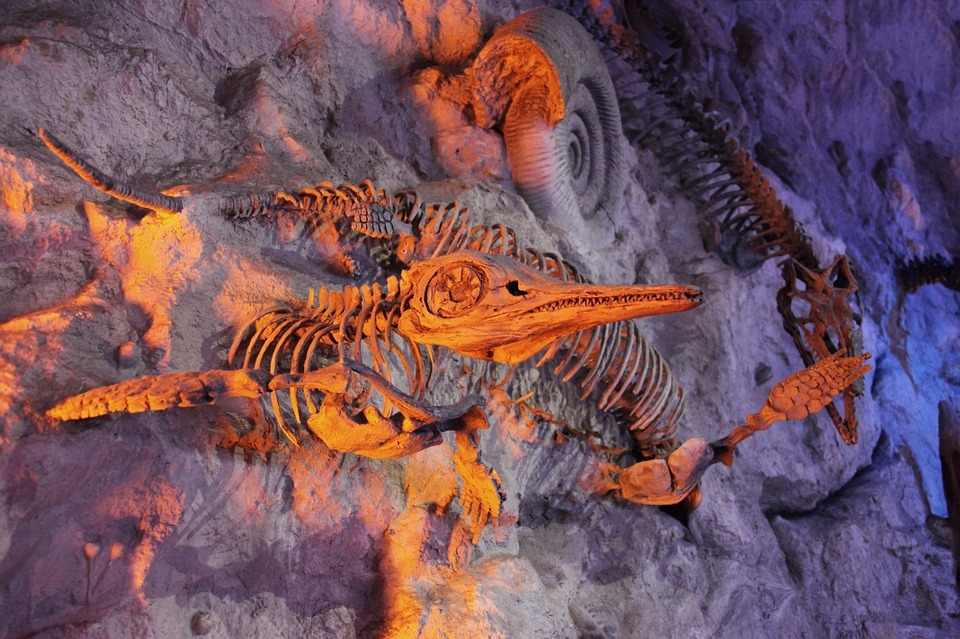Over time it can be assumed that every remnant of the dinosaurs has now been discovered. However, a group of paleontologists came across a never-before-discovered set of dinosaur tracks, belonging to the stegosaur.
Express reports that paleontologists have discovered a set of what appeared to be dinosaur tracks that have yet to be found on the northeast part of Skye. These tracks surfaced after storms back in 2017 moved the boulders on the beach. After a close examination of the 50 footprints that were discovered, they were able to confirm that these belonged to the stegosaur, a cousin of the Jurassic period stegosaurus, and known for their backplates.
The place where the footprints were discovered, the researchers believe it used to be a mudflat on the edge of a shallow lagoon millions of years ago. With this discovery, the site at Brothers’ Point, is now one of the oldest-known fossil records of this major dinosaur group in the world. According to Ph.D. student Paige DePolo from the University of Edinburgh, who also led the discovery, this discovery would provide a better sense of the kinds of dinosaurs that once roamed near the coast of the Scottish island during the middle Jurassic period. “In particular, deltapodus tracks give good evidence that stegosaurs lived on Skye at this time,” said DePolo.
Dr. Steve Brusatte of the University of Edinburgh, who also took part in the study, explained that this discovery sheds more light on the dinosaurs that once roamed Scotland millions of years ago. “We knew there were giant long-necked sauropods and Jeep-sized carnivores, but we can now add backplated stegosaurs to that roster and maybe even primitive cousins of the duck-billed dinosaurs too.”
The widely-known cause of the extinction of the dinosaurs is an asteroid collision, but there are some who are skeptical as they believe something else caused the dinosaurs’ demise. A previous report reveals that a group of researchers from the University of Southampton discovered conclusive proof that an asteroid collision was what killed off the dinosaurs.
According to paleoclimatology professor Paul Wilson, “We just discovered there can be no doubt that the cause of the Cretaceous tertiary extinction that wiped out the dinosaurs and 90 percent of marine life forms was this asteroid impact. So a giant lump of rock the size of Manhattan slammed into the Gulf of Mexico on the Yucatan peninsula, creating a 200-kilometer wide hole in the ground.”



 The mystery of consciousness shows there may be a limit to what science alone can achieve
The mystery of consciousness shows there may be a limit to what science alone can achieve  Why now is the time to address humanity’s impact on the moon
Why now is the time to address humanity’s impact on the moon  Why some people don't trust science – and how to change their minds
Why some people don't trust science – and how to change their minds  The brain is the most complicated object in the universe. This is the story of scientists’ quest to decode it – and read people’s minds
The brain is the most complicated object in the universe. This is the story of scientists’ quest to decode it – and read people’s minds  Eggs from men, sperm from women: how stem cell science may change how we reproduce
Eggs from men, sperm from women: how stem cell science may change how we reproduce  Spacesuits need a major upgrade for the next phase of exploration
Spacesuits need a major upgrade for the next phase of exploration  Why is the universe ripping itself apart? A new study of exploding stars shows dark energy may be more complicated than we thought
Why is the universe ripping itself apart? A new study of exploding stars shows dark energy may be more complicated than we thought  A Nasa rover has reached a promising place to search for fossilised life on Mars
A Nasa rover has reached a promising place to search for fossilised life on Mars  How do airplanes fly? An aerospace engineer explains the physics of flight
How do airplanes fly? An aerospace engineer explains the physics of flight  Orbital resonance − the striking gravitational dance done by planets with aligning orbits
Orbital resonance − the striking gravitational dance done by planets with aligning orbits  The rising flood of space junk is a risk to us on Earth – and governments are on the hook
The rising flood of space junk is a risk to us on Earth – and governments are on the hook  Our survey of the sky is uncovering the secrets of how planets are born
Our survey of the sky is uncovering the secrets of how planets are born  Genetic diseases: How scientists are working to make DNA repair (almost) a piece of cake
Genetic diseases: How scientists are working to make DNA repair (almost) a piece of cake  Dark energy is one of the biggest puzzles in science and we're now a step closer to understanding it
Dark energy is one of the biggest puzzles in science and we're now a step closer to understanding it  What is minoxidil, the anti-balding hair growth treatment? Here’s what the science says
What is minoxidil, the anti-balding hair growth treatment? Here’s what the science says 































